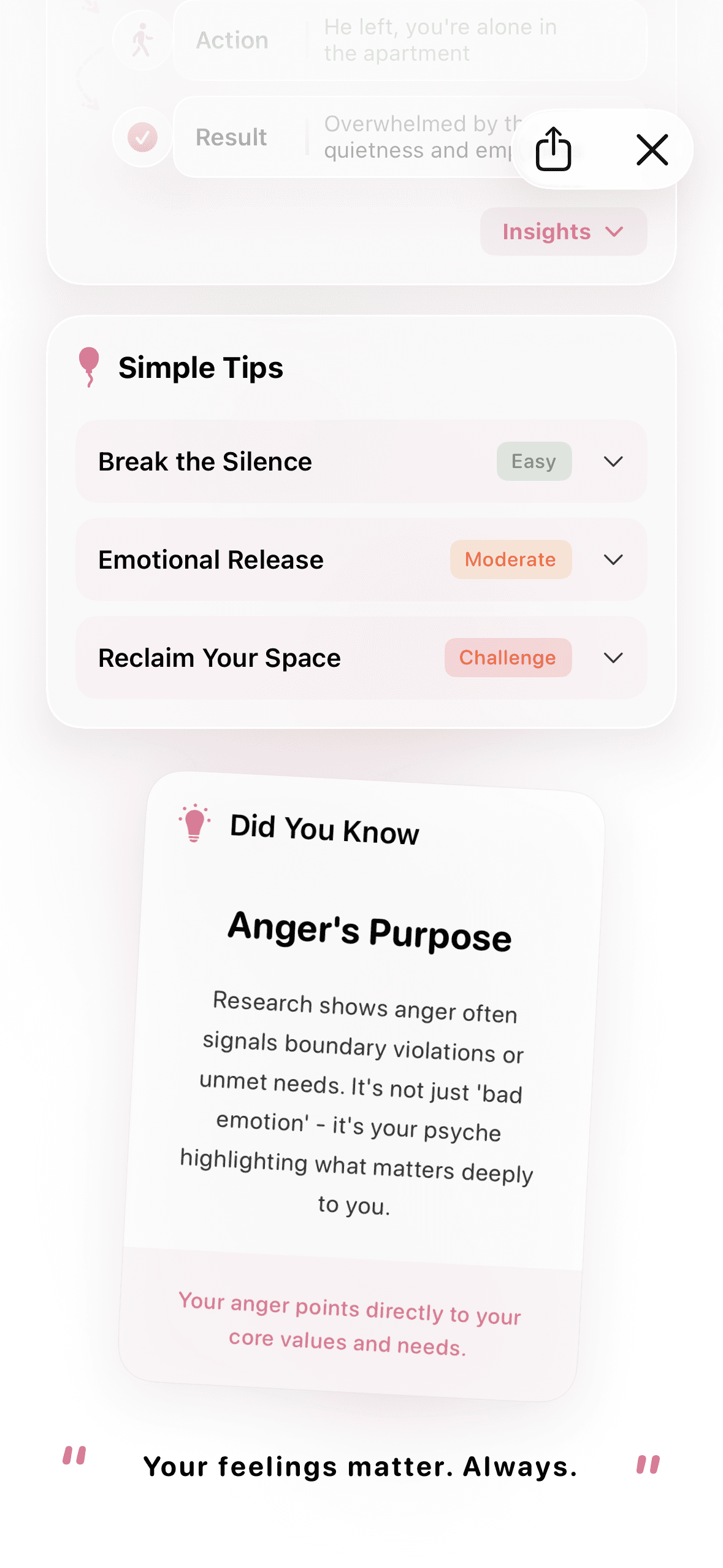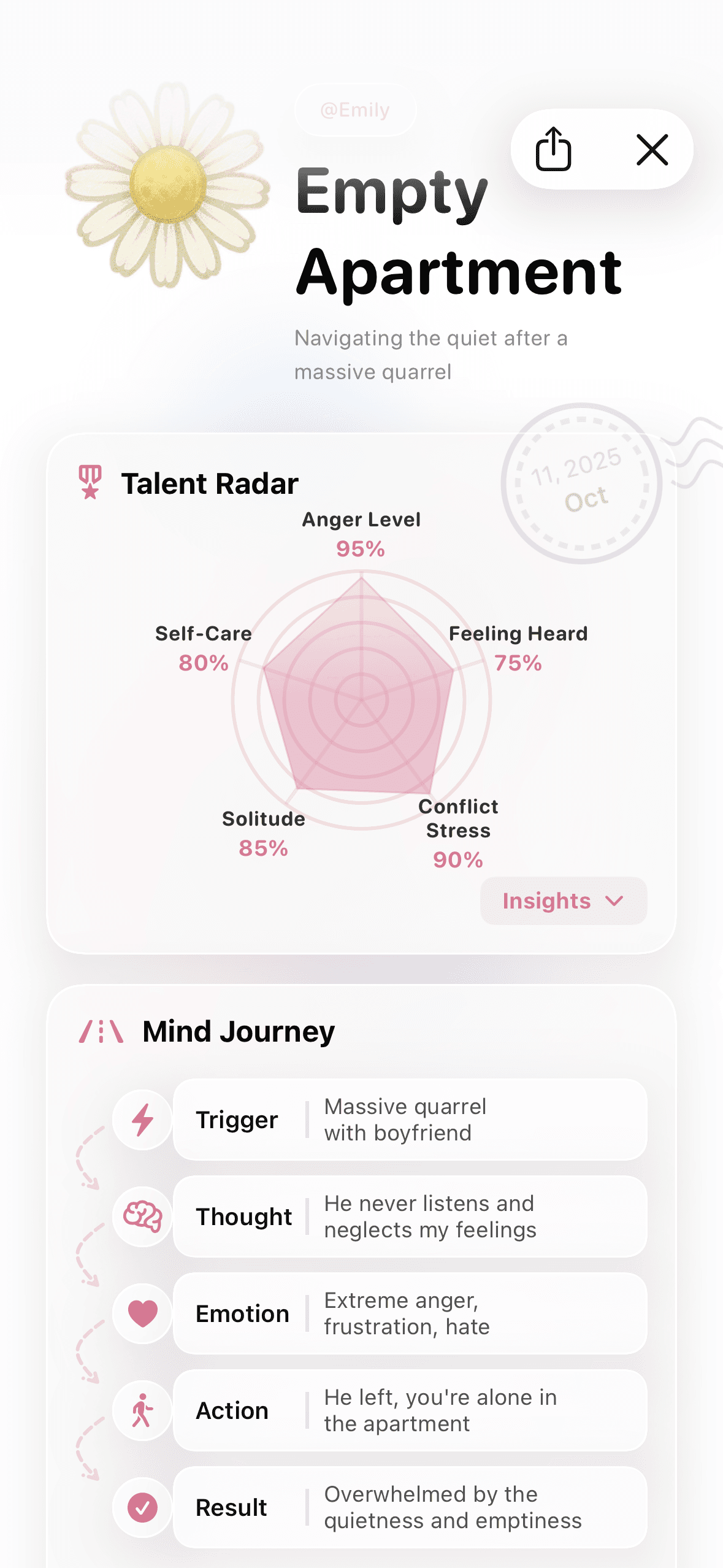Why Journaling Helps with Anxiety
Anxiety can feel overwhelming, but journaling provides a powerful outlet for processing emotions and gaining clarity. Research shows that expressive writing can reduce anxiety symptoms by up to 28% when practiced regularly.
When you journal about your anxious thoughts, you create distance between yourself and your worries. This externalization helps you observe patterns, identify triggers, and develop coping strategies.
Getting Started: The Basics
Starting a journaling practice for anxiety doesn't have to be complicated. Here's what you need to know:
1. Choose Your Medium
While traditional pen and paper work well, digital journaling apps like Lifelight offer additional benefits:
- AI-powered prompts tailored to your emotional state
- Mood tracking to identify anxiety patterns
- Secure, private storage with password protection
- Insights and analysis of your emotional journey
2. Set a Regular Time
Consistency is key. Choose a time when you can write without interruption:
- Morning pages: Clear your mind before starting the day
- Evening reflection: Process the day's events and emotions
- Anxiety moments: Write when you feel anxious arising
3. Start Small
Begin with just 5-10 minutes daily. You don't need to write pages – even a few sentences can be beneficial.
Effective Journaling Techniques for Anxiety
The Worry Window Technique
Designate 15 minutes as your "worry window." During this time, write down all your anxieties without judgment. When worries arise outside this window, remind yourself you'll address them during your designated time.
Thought Challenging
Use your journal to examine anxious thoughts objectively:
- Write down the anxious thought
- List evidence for and against it
- Create a balanced, realistic perspective
- Note how you feel after reframing
Gratitude Journaling
Combat anxiety by focusing on positives. Write three things you're grateful for daily, no matter how small. This practice rewires your brain to notice good things, reducing anxiety over time.
Stream of Consciousness
Set a timer for 10 minutes and write continuously without stopping or editing. This technique helps release pent-up emotions and uncover underlying concerns.
Journaling Prompts for Anxiety
Use these prompts when you're unsure what to write:
- "Right now, I'm feeling anxious about..."
- "The physical sensations I notice in my body are..."
- "If my anxiety could speak, it would say..."
- "One thing I can control in this situation is..."
- "A time I successfully managed anxiety was..."
- "My anxiety is trying to protect me from..."
- "Three coping strategies that help me are..."
Making the Most of Your Anxiety Journal
Track Patterns
Review your entries weekly to identify:
- Common triggers
- Time patterns (when anxiety peaks)
- Effective coping strategies
- Progress and improvements
Combine with Other Strategies
Journaling works best as part of a comprehensive anxiety management plan:
- Practice deep breathing before writing
- Include mindfulness observations
- Note exercise and sleep patterns
- Record medication effects if applicable
Common Challenges and Solutions
"I don't know what to write"
Start with "I don't know what to write, but I'm feeling..." and let it flow from there. Use prompts or try the Lifelight app's AI-guided questions.
"Writing makes me more anxious"
If journaling increases anxiety initially, limit sessions to 5 minutes and end with something positive. Over time, it becomes easier.
"I forget to journal"
Set phone reminders or link journaling to an existing habit (like morning coffee). Digital apps can send gentle nudges.
The Lifelight Advantage for Anxiety Journaling
While any journaling practice can help with anxiety, Lifelight's AI-powered features are specifically designed to support your mental health journey:
- Intelligent Prompts: Our AI suggests questions based on your emotional state and patterns
- Mood Tracking: Visualize anxiety levels over time to spot triggers and improvements
- Memory Vine: See how today's anxieties connect to past experiences and growth
- Privacy First: Your thoughts are encrypted and completely private
- 24/7 Companion: Get support whenever anxiety strikes, day or night
Start Your Journey Today
Journaling for anxiety is a powerful tool for emotional wellness. Whether you choose traditional methods or embrace AI-powered journaling with Lifelight, the important thing is to begin. Your future self will thank you for taking this step toward better mental health.
Remember: be patient with yourself. Healing takes time, but with consistent journaling practice, you can develop resilience, gain insights, and find peace amidst anxiety.



